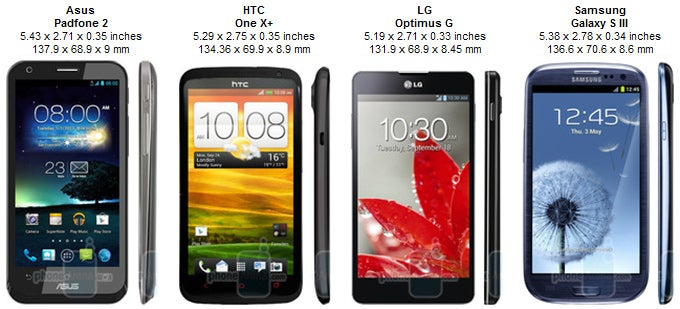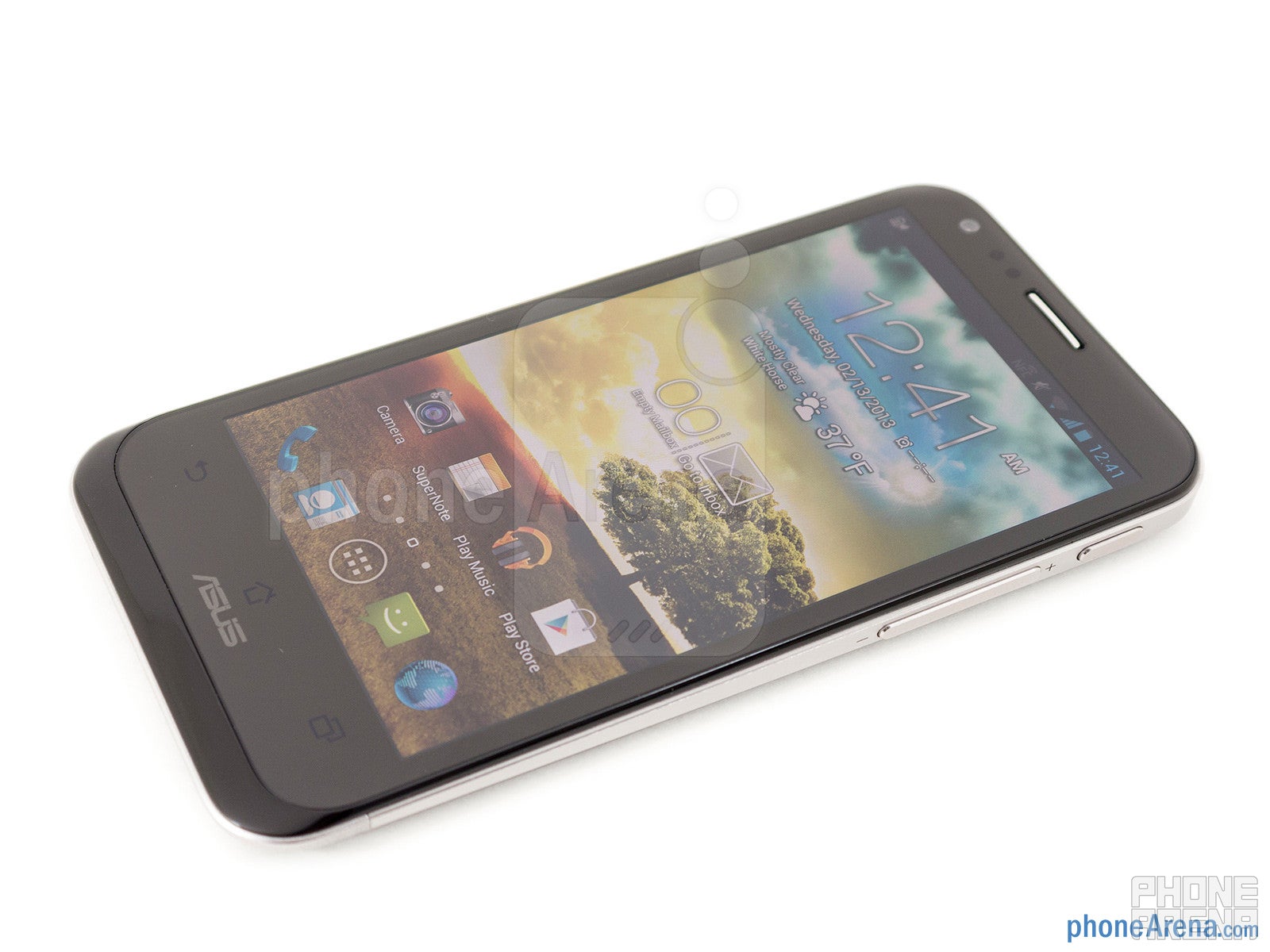Asus Padfone 2 Review

Thanks to our partners from Tekshop for providing the review unit.
Last fall, we had the chance to check out the specialized device in the Asus Padfone, which introduced us to a whole new gadget category worth applausing. We're already seeing its successor in the aptly named Asus Padfone 2. Naturally, it's blessed with the usual set of hardware upgrades we'd expect to find, but in the world of always-evolving tech, does it stand a chance at attracting consumers to its uncanny dual-form functionality?
The package contains:
- microUSB cable
- Wall Charger
- Quick Start Guide
- Product Safety and Warranty Guide
Design:
Independently as a phone, the Asus Padfone 2 doesn't deviate much in terms of design over its predecessor, and in fact, the only noticeable new thing is its larger size in footprint – to accommodate the bigger screen. Utilizing a wedged tapered design similar to what's used by its Zenbook Prime ultrabooks, it gives the handset a very distinct look over other highly respected smartphones. Sure, its spun plastic casing might not be regarded as premium, but regardless of that, it contributes in making the handset deceptively lightweight. Obviously, it's not often we see Asus making smartphones, but we're so darn impressed with what they have here.
Despite it being a mostly stock Android 4.1.1 Jelly Bean device, Asus opts to give the handset the usual trio of capacitive Android buttons beneath its display. On the opposite end, we naturally find its earpiece, light & proximity sensors, and front-facing 1.2-megapixel camera.

You can compare the Asus Padfone 2 with many other phones using our Size Visualization Tool.
Display:
Continuing to amaze us, this is sporting one heck of a sharp looking display that really gets our attention from the onset. With its sizable 4.7-inch 720 x 1280 Super IPS+ display, it no doubt produces the same level of detail we're accustomed to seeing nowadays on rival high-end devices, which is attributed to its pixel density of 312 ppi. At the same time, however, its Super IPS+ display is extraordinary vivid with its warm colors, modest viewing angles, strong brightness output, and high contrast – all of which combine to offer superior outdoor visibility. Frankly, we're mesmerized by it!
Padfone Station and Docking:
If you are not familiar with the Padfone concept, it consists of a smartphone that docks into a tablet “station” – the station features its own internal battery and display, but is not a fully featured tablet – it doesn't work without the phone, which provides the processor, memory, etc.
This time around, Asus decided to change how the smartphone is docked into the Padfone Station. Easier than before, the handset is simply requires being slid into the slot in the rear of the Padfone Station, where it makes the connection.
Specs-wise, there isn't anything too extraordinary, seeing that it features a 10.1-inch WXGA (1280 x 800) IPS display with Corning Gorilla Display. Indeed, it's not the most detailed thing out there, but nevertheless, it's sufficient enough to accept and use. Looking at the design, we're somewhat irked by its choice of using a soft touch matte finish – mainly because it doesn't quite contrast well with the spun plastic rear casing of the smartphone.
Asus Padfone 2 360-Degrees View:
Interface and Functionality:
Quickly glazing over the interface running on the Asus Padfone 2, it's evident that it's mostly sticking to a stock Android 4.1.1 Jelly Bean experience. Of course, the homescreen is livened up with Asus' set of widgets – while the notifications panel gives us access to some of the device's connectivity features. Connecting it to the Padfone Station, though, we're glad to see some additional enhancements to the UI. For starters, it splashes some multi-tasking elements when the triangle shaped on-screen Android button is pressed. Actually, it's similar to the mini apps tray featured in Samsung's TouchWiz UI for tablets, where a select group of mini apps can be overlaid on top of whatever we're doing. Needless to say, it's an appreciated feature, but it would've been nice to see a larger selection. And lastly, the same dynamic display switch feature is in tow with this one as well, which makes for a smooth transition with certain apps when going from the smartphone to the tablet and vice versa – though, not all apps are supported.
As for the usual set of core organizer apps, they don't deviate from what we're typically used to seeing. Thankfully, their layouts adapt to whatever we're using – whether it's the smartphone or tablet. And of course, it helps that the dynamic display switch feature makes for a smooth transition.
Processor and Memory:
Seriously, this isn't messing around one bit, as it's packing some firepower under the hood to keep its rivals in check. Specifically, the Padfone 2 is armed with a quad-core 1.5GHz Qualcomm Snapdragon S4 Pro chipset with the Adreno 320 GPU and 2GB of RAM. Simply put it folks, it's a speed demon any way we dissect it. Heck, even graphically intensive live wallpapers are no match for it, since it exhibits the same consistent and smooth performance with everything.
| Quadrant Standard | AnTuTu | NenaMark 2 | |
| Asus Padfone 2 | 7446 | 21197 | 57 |
| LG Optimus G | 7669 | 9565 | 60,1 |
| Samsung Galaxy S III | 5335 | 15152 | 58,6 |
Unfortunately, neither the smartphone or Padfone Station is sporting a useful microSD slot, which means that you'll need to be mindful about using up its 16GB of internal storage.
Internet and Connectivity:
Needless to say, nothing is sweeter than being exposed to some buttery smooth executions with everything related to the web browsing experience. Not only do pages load extremely fast with this speed demon, but thanks to the high resolution display, fluid navigational controls, and instant page rendering, we can't help but praise the all-encompassing experience that the Padfone 2 offers in this specific category.
With our review unit, it's an unlocked GSM smartphone that features LTE connectivity on the 800/1800/2600MHz spectrum – while UMTS/HSPA is handled on the 900/2100MHz bands, which is unusable in the States resulting in 2G mode only. Much like its contemporaries, it's outfitted with the usual set of connectivity features that we commonly expect to find – such as aGPS, Bluetooth 4.0, 802.11 a/b/g/n Wi-Fi, mobile hotspot functionality, and NFC.
Camera:
Certainly, its 13-megapixel auto-focus camera with an f2.4 lens might seem beefy amongst other things, but when it comes down to it, the results are nothing more than average at best. Well, we can vouch that it can capture some pleasant shots outdoors – assuming that lighting is sufficient. However, the distracting elements include its poor handling of dynamic range and its prone to blurring in lower lighting situations due to its slower capture rate. Then again, the LED flash seems potent enough to cast enough lighting.
In addition, its 1080p video recording quality is nearly identical to its still capture quality, as there aren't enough compelling details to propel it over its highly esteemed rivals. When panning quickly, it also exhibits some recognizable artifacting elements, though, it's not as prominent unless we're looking very closely at it. However, the absolute most distracting part about its quality, is simply the slow capture rate of the camera, which at 23 frames per second, makes it appear noticeably choppy.
Asus Padfone 2 Sample Video:

Multimedia:
Well, there's nothing to say about the music player on the Padfone 2, since it's the same old Google Play Music app used by many devices. Using the default equalizer setting, the audio quality sounds a tiny bit strained at the loudest volume setting, but then again, selecting the appropriate equalizer settings enhances the quality for the better.
Seeing that we've raved about the display earlier on, it doesn't surprise us that the Asus Padfone 2 handles high-definition videos effortlessly – even better when the display is sharp and vibrant! Strangely though, it's lacking DivX support out of the box, which is weird considering it supports other video codecs such as H.264, MPEG-4, and Xvid.
Call Quality:

During our time using the handset, we didn't experience seeing the handset's signal strength fluctuating erratically – nor did it drop any phone calls. In fact, signal strength stayed at a steady -79 dBm in high coverage areas.
Battery:
Hiding away a 2,140 mAh battery inside of its body, we can't complain too much about its longevity, especially when its rated 16 hours of 3G talk time is ballooned all the way to 36 hours of 3G talk time when the battery capacity of the Padfone Station is thrown into the mix. In our testing, where we used it with Wi-Fi connectivity at home and EDGE speeds elsewhere, we're able to get 2 days of normal usage on a full charge, which consisted of mostly surfing the web and text messaging. Of course, you can expect the results to be less if it's used with LTE primarily. Still, it's worth noting that we're able to get 4 days of juice with mixed usage between the handset and Padfone Station.
Conclusion:
As an independent smartphone, the Asus Padfone 2 is one impressive device that can tangle with some of the greats out there, seeing that it has that wonderful balance between raw performance and impressive hardware. Crazy to believe it, but the handset is one of the lightest smartphones in its class! Beyond that, we're glad that Asus decided to go with a different route in how the smartphone is docked with the Padfone Station. Simply put it, the entire thing makes more sense – plus, it's seamless and quick with very few complications.
However, when this is sporting an average price point of $800 contract-free for both devices, it'll surely raise a few brows in the process. Typically, it's a hard tally to cough up, but when we think about it more, some will surely dish out the dough to experience something very different. Still, purchasing the Padfone 2 means that you'll need to be invested in the two devices for the long run – especially considering that the next version of this device won't accommodate the older hardware. Generally speaking, it's neat that there's dual-functionality with the Padfone 2, but as an all-in-one solution, you might also want to think about some of the other phablets out there – such as the Samsung Galaxy Note II that might appease your itch.
Author's note: the currently available (unlocked) version of the phone is Europe-friendly only. In the States, it will work without 3G/4G connectivity.
Software version of the review unit:
Android Version: 4.1.1
Build Number: JRO03L
Kernel Version: 3.4.0
Asus Padfone 2 Video Review:

Android Version: 4.1.1
Build Number: JRO03L
Kernel Version: 3.4.0
Asus Padfone 2 Video Review:










Things that are NOT allowed: